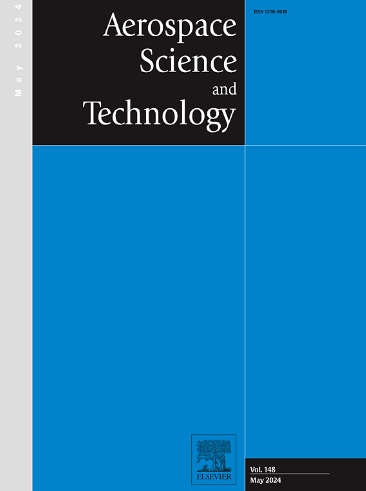Fault-tolerant control method for carrier landing with actuator and structural faults
IF 5
1区 工程技术
Q1 ENGINEERING, AEROSPACE
引用次数: 0
Abstract
This paper studies the autonomous carrier landing problem of carrier-based unmanned aerial vehicle (UAV) under unexpected actuator and structural faults. An adaptive fault-tolerant control method is developed for carrier-based UAV, accounting for both external disturbances and internal faults. Initially, the impacts of unexpected faults on the UAV's physical and aerodynamic characteristics are analyzed, focusing on the loss of actuator efficiency, variations in the inertia matrix, and the generation of additional forces and moments. The effects of wave motion and carrier airwake on the carrier landing process are considered. Subsequently, an automatic landing control system (ALCS) based on the L1 adaptive nonlinear dynamic inversion (L1ANDI) method is proposed to address the challenge of safe landing control under these conditions. The L1ANDI controller combines the nonlinear dynamic inversion (NDI) baseline controller, which addresses known nonlinearities, with the L1 adaptive module to account for unknown nonlinearities introduced by environmental disturbances and UAV faults. The stability of this approach is proven using the Lyapunov function. Finally, comparative simulation experiments are conducted in three scenarios, benchmarking the proposed L1ANDI against NDI and L1 adaptive control, to validate its effectiveness. The results demonstrate that the proposed method exhibits superior control performance and robustness to disturbances and uncertainties compared to other methods. These results indicate that the proposed method enables the safe landing of carrier-based UAV under both external disturbances and internal faults.
求助全文
约1分钟内获得全文
求助全文
来源期刊

Aerospace Science and Technology
工程技术-工程:宇航
CiteScore
10.30
自引率
28.60%
发文量
654
审稿时长
54 days
期刊介绍:
Aerospace Science and Technology publishes articles of outstanding scientific quality. Each article is reviewed by two referees. The journal welcomes papers from a wide range of countries. This journal publishes original papers, review articles and short communications related to all fields of aerospace research, fundamental and applied, potential applications of which are clearly related to:
• The design and the manufacture of aircraft, helicopters, missiles, launchers and satellites
• The control of their environment
• The study of various systems they are involved in, as supports or as targets.
Authors are invited to submit papers on new advances in the following topics to aerospace applications:
• Fluid dynamics
• Energetics and propulsion
• Materials and structures
• Flight mechanics
• Navigation, guidance and control
• Acoustics
• Optics
• Electromagnetism and radar
• Signal and image processing
• Information processing
• Data fusion
• Decision aid
• Human behaviour
• Robotics and intelligent systems
• Complex system engineering.
Etc.
 求助内容:
求助内容: 应助结果提醒方式:
应助结果提醒方式:


